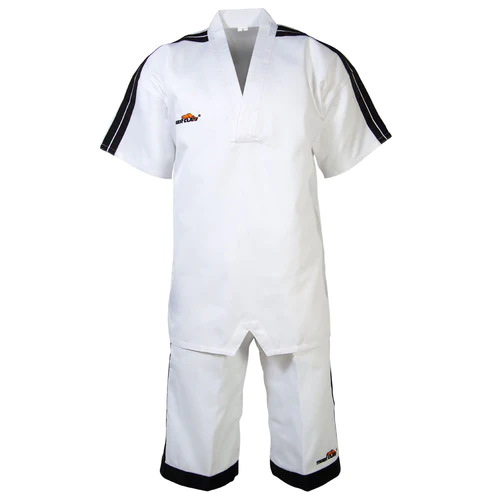Comic Cons are far more than comics now. They fuse what was formerly known as Science-Fiction conventions with Comic book conventions into multi-genre entertainment gatherings, full of celebrities, panels and of course, cosplay. It’s a meeting place of fans of imaginative fiction whether they be comics, TV or movies, a celebration of storytelling from the story tellers themselves and from so many tribes that follow these modern myths that bind pop culture together. On August 16-18 2019, KungFuMagazine.com's Publisher Gene Ching and Senior Graphic Artist (and resident comic authority) Patrick Lugo investigated Silicon Valley Comic Con 2019 in search of Kung Fu connections.
Friday: It’s Morphin Time! - Gene Reports
As a long time attendee and participant in such Cons, I’ve always felt that the Kung Fu movie genre is sorely underserved here. We have our comics, our TV and our movies too. There are arguably more Kung Fu movies than any other single movie genre. We have plenty of stories, but how much has really crossed over to popular U.S. culture?
It’s been two years since I attended Silicon Valley Comic Con. It’s our biggest local Con going now, produced by Steve Wozniak, who bring a unique Silicon Valley tech angle in with representation from real science programs like NASA. SVCC is held in the San Jose McEnery Convention Center, the same location where we’ve been holding our Tiger Claw Elite Championships since 2009.
On Friday night, Silicon Valley Comic Con presented the panel ‘It's Morphin Time! Q&A With the Power Rangers’ with four members of the original cast, Karan Ashley (second Yellow Ranger Aisha Campbell), David Fielding (Zordon), and Austin St. John (first Red Ranger Jason Lee Scott), and Johnny Yong Bosch (second Black Ranger Adam Park). Both Austin St. John and Johnny Yong Bosch were cast because of their foundation in martial arts. St. John began training at age five and holds black belts in both Taekwondo and Judo. Yong Bosch’s roots are in our own beloved style, Kung Fu. .
When it comes to pop culture and the martial arts, the impact of the MIGHTY MORPHING POWER RANGERS is undeniable. During the Q&A period, numerous fans thanked them for their own martial arts practice. For many kids who grew up with the show, the Power Rangers inspired a generation to begin their martial journey. Since its U.S. debut in 1993, the franchise has produced 26 seasons of TV and three feature films, including a major theatrical reboot of POWER RANGERS released just two years ago. The show was based on a Japanese tokusatsu TV series SUPER SENTAI, which began in 1975 and is also still going. Tokusatsu refers to a uniquely Japanese genre where costumed stunt people are play super heroes and monsters like Godzilla. Hasbro retooled the series for American consumption, taking the Japanese costumed sequences and splicing in American actors to create a more acceptable program for Saturday morning cartoons back in the early nineties. Nowadays, this seems like the epitome of whitewashing but times were much different then. Actually, MIGHTY MORPHING POWER RANGERS presented one of the first racially-diverse casts. The original show was action-heavy with lots of choreographed fights - it was also one of the earliest appearances of martial arts as a regular theme for the show.
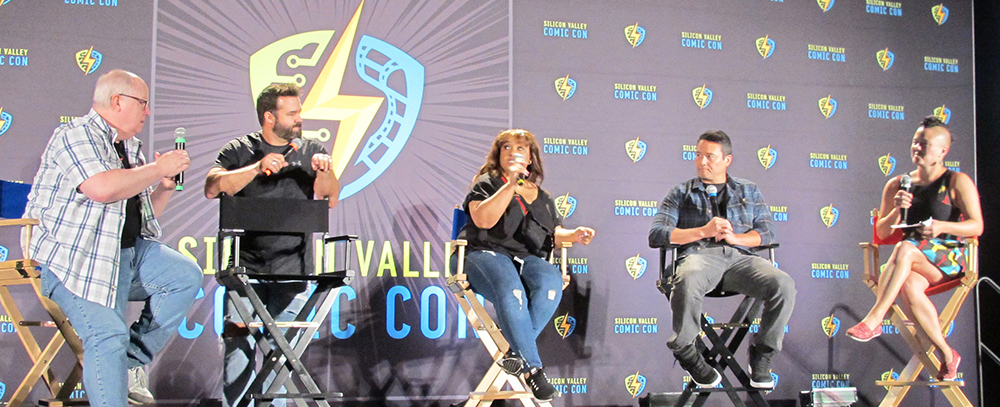
I confess that personally, I wasn't a fan of the Power Rangers. My family roots are in Hawaii, and in my youth, I visited the islands frequently, so I was raised watching pure unadulterated tokusatsu with shows like ULTRAMAN, RAINBOW SEVEN and my all-time favorite KIKAIDER. MIGHTY MORPHING POWER RANGERS felt like whitewashing to me before that term even existed. But now, upon reflection, I see it in the context of the times. The panelists made some good points that addressed the issue. It was one of the first racially-integrated shows with an emphasis on teamwork and unity - many of the qualities that Hollywood strives for now in an almost pandering way. Back in the nineties, they just did it. It was pioneering.
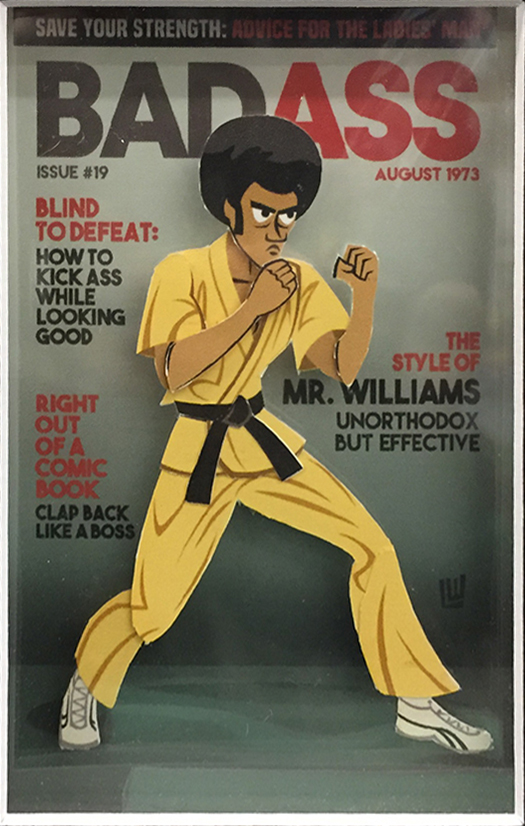
Art by Lawrence Washington – lawrencewashington.blogspot.com
I couldn't resist asking Bosch and St. John about how the show affected their martial arts practice. Here's what they said:
"A lot of the stunt guys were martial artists," replied Bosch first. "One of them taught Jeet Kune Do, actually, so I would go and I trained. I mean it opened up so much more for me. I just came from a Shaolin Kung Fu background and when I went in there, I picked up so many different things. I became eventually – I guess now – like a freestyle mixed martial artist I guess. It definitely opened up more possibilities to do more martial arts.”
St. John answered next. “I have to echo everything that he said. I mean I didn’t train with the Jeet Kune Do guy, but one of the guys I looked up to – there were two – Richard – I can never remember his last name, but he was heavy into Kung Fu and he was about to go to China and do the world competition over there. Incredible martial artist. And Hien Nguyen – the guy was just super thin and defied gravity. The guy could stay in the air – he’s probably still in the air. He just hasn’t come down. He just flew. And I was always so thick. I was great at the power shots and I was fairly fast, but not like these guys who were a buck sixty, a buck fifty. They flew forever and were so fast so you couldn’t help but be around so many incredibly talented people and not learn something. I can’t imagine how big your ego would have to be to not learn in the face of so much talent... Like Johnny, I’ve been through a lot of different arts. I guess everyone is doing that because everyone is so hybrid, so even people who are lifetime in one art have plenty of experience sparring people with other arts. You just can’t avoid it, I feel like in today’s world. And it’s great. I think it’s great.”
Austin St. John still does seminars, mostly focusing on 'genuine Kenpo Quanfa style ' and 'many mixes.' From his description, I'm guessing that the Richard he mentioned was the late local champion Richard Branden. Even though I wasn't a fan, I respect their contributions to expanding martial arts awareness in America. After all, that's what this is all about.
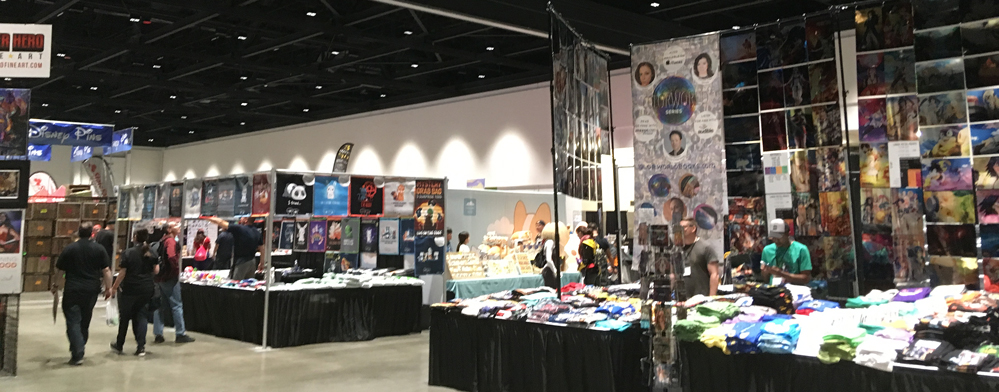
Saturday: Comics and Kung Fu - Patrick Reports
As with most conventions, Saturday is the big day. The majority of attendants appear on Saturday and most vendors plan to make the bulk of their income on sales made then. The astute observer will notice the subtle price hikes, but it’s doubtful that will curb any purchases. More likely, it will inspire repeated visits to other booths selling similar items in hopes of finding the best deal.
A convention like SVCC is not large enough to bring too many vendors selling the same wares. But there were exceptions, most notably Funko Pop figurines which were on offer at several locations; for the Funko Pop collector, comparing prices was sure to be a winning strategy. This was also true for Anime-inspired toys and statues and to lesser degree novelty Filipino Butterfly Knives, Katanas, and the occasional Karambit. Geek themed T-shirts are also plentiful, as are patches, but rarely will any two booths will offer the same shirts. The other kind of products clearly in high demand are cosplay accessories; mass-produced masks and replica weapons are plentiful and await customization by an inspired cosplayer. Unless, of course, they are looking for either of Thor’s hammers, Captain America’s shield or Batman’s bat-shuriken, such items are plentiful and are so accurate as to be in blatant defiance of copyright or trademark law.
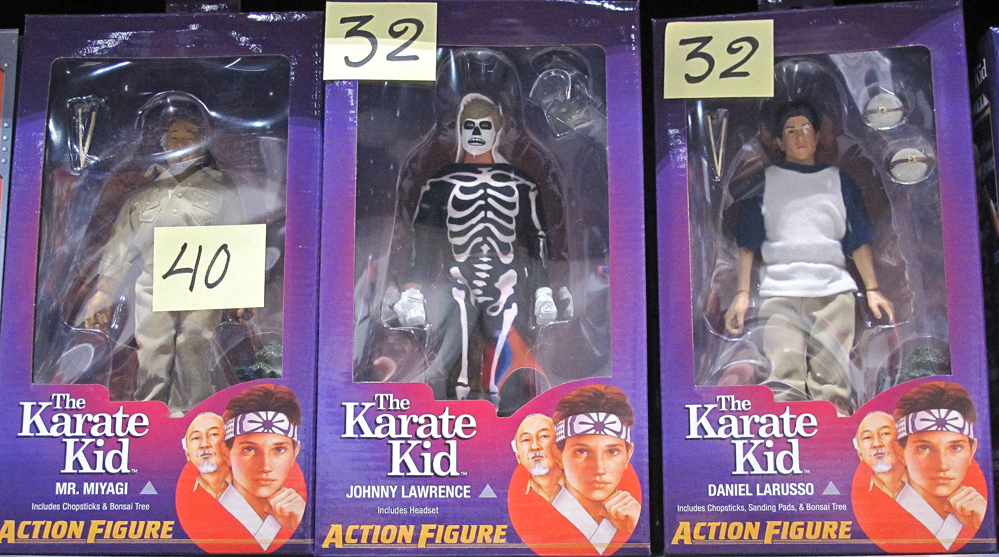
One should expect to find comics at a comic convention, discounted graphic novels competed with 50% off boxes but the selection to vast and random to make price comparisons worth the bother. Comics collectors attend expecting to spend money, either while trawling the bargain boxes or seeking out those pricey rare issues needed to complete a run of titles. But one can’t ignore the irony that comics are generally sidelined at today’s comic conventions.
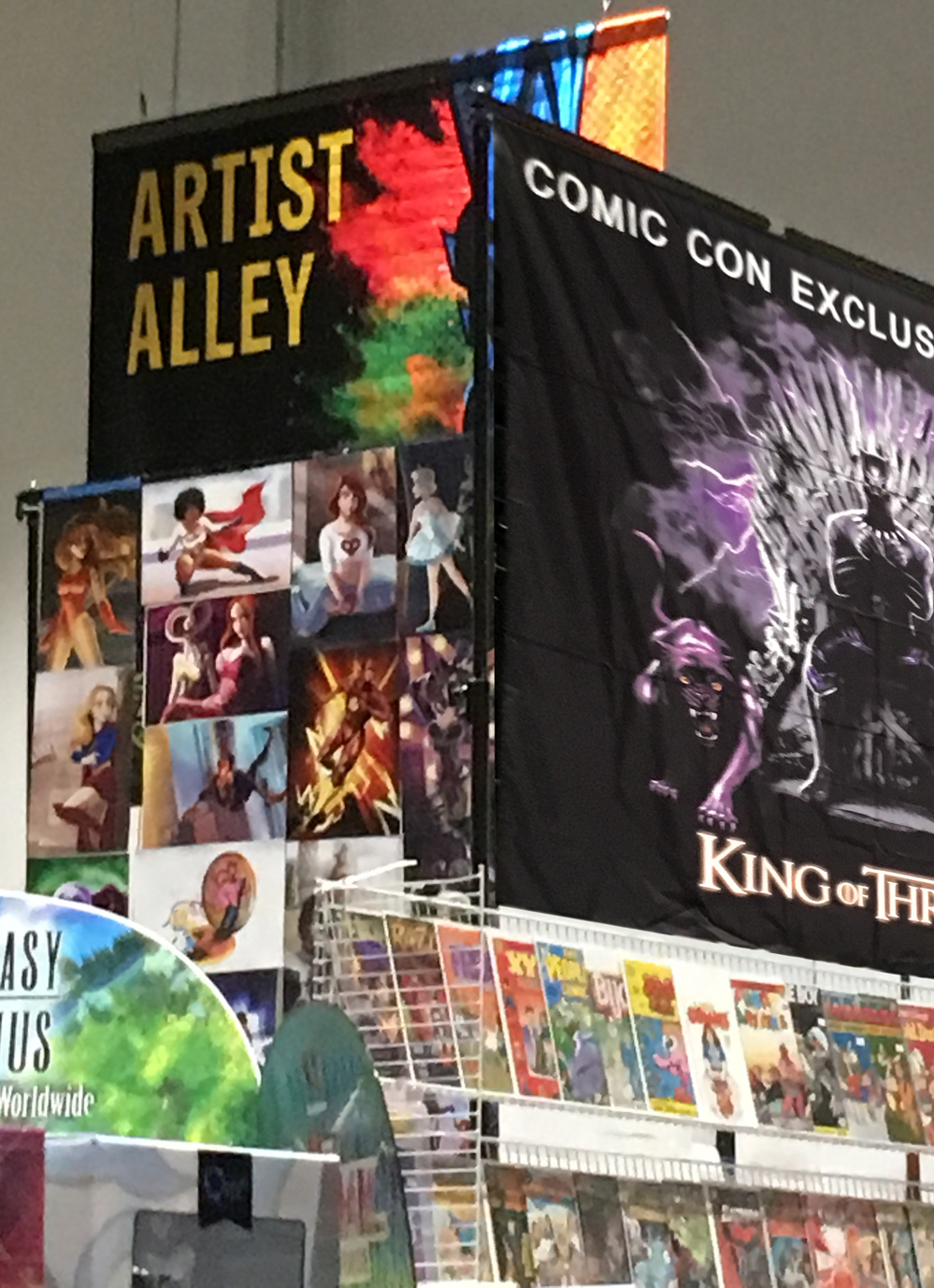 Even at Artist’s Alley comics are in the minority of products on offer. For those unfamiliar with the term, Artist’s Alley is a section of the convention dedicated to independent artists at all levels of skill and career development. Once, it was the place where an aspiring artist could hope to be discovered by some roaming comics editor while attempting to recoup table fees selling sketches, prints or copies of their ‘zine or indie comic. While this is still true of larger cons, artists have since adapted much more of a craft faire approach to their presence in Artist’s Alley.
Even at Artist’s Alley comics are in the minority of products on offer. For those unfamiliar with the term, Artist’s Alley is a section of the convention dedicated to independent artists at all levels of skill and career development. Once, it was the place where an aspiring artist could hope to be discovered by some roaming comics editor while attempting to recoup table fees selling sketches, prints or copies of their ‘zine or indie comic. While this is still true of larger cons, artists have since adapted much more of a craft faire approach to their presence in Artist’s Alley.
Along with prints and original art, modern production technology has allowed artists to offer all manner of products: magnets, enamel pins, greeting cards, posters and more. While featuring artwork by the artist much of the subject matter is familiar, often it’s a given artist’s take on a popular character or series. Alternatively artists might offer a mash-up of preexisting properties like a team of Avengers set in the Game of Throne’s land of Westeros. Amidst it all, the occasional original comic can still be found.
With the Bay Area’s Alternative Press Expo (a.k.a. APE 1994-2017) a thing of the past and SPX (Bethesda, Maryland’s Small Press Expo) situated across the continent, indie comics are in the minority here and Kung Fu-themed ones even more so. Since as far back as the debut of Judomaster in Charlton Comics’ Special War Series #4 (November 1965) followed by Marvel’s Shang Chi (Special Marvel Edition #15 - December 1973) a sliver of North American creators have used comics to express their fascination with the martial arts. The 1980’s gave the world Teenage Mutant Ninja Turtles while The Crow soared to the height of its popularity in the 90’s. Long time readers of our magazine might also remember Tiger’s Tale which saw publication in the last 90’s and early aughts. With the turn of the century Kung Fu-themed comics saw a brief boom with notable comics and graphic novels like GrossGen Entertainment’s Way of the Rat (2002-2004), Geof Darrow's Shaolin Cowboy (2004-2017), Kagan McLeod’s Infinite Kung Fu (2011) and Gene Luen Yang’s Boxers & Saints (2013). At Silicon Valley Comic Con, the sole comic to actively continue this tradition is titled Howling Snow: A Kung Fu Fable, by writer David Ramirez and Beijing-born artist Ensoul, who traveled to the states to promote this project despite her minimal fluency in English - a brave thing to do and worthy of an official KungFuMagazine.com sticker.
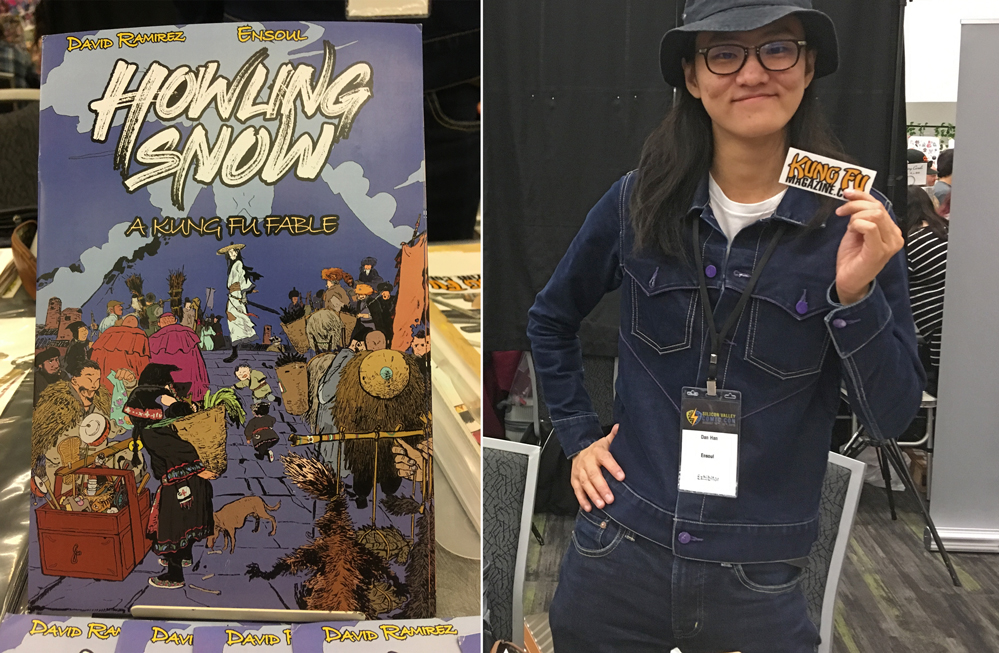
Elsewhere in the convention center SVCC’s headlining celebrities made their appearances. Among the plethora of lesser known celebrities iconic convention mainstays Lou Ferrigno (The Hulk of the 80’s TV show) was joined by other famous burly men, the WWE’s Stone Cold Steve Austin, Terminator and former California Governor Arnold Schwarzenegger as well as AQUAMAN himself Jason Momoa who was clearly the centerpiece of the event causing crowds to howl with glee whenever he arrived or departed. For the less star-struck and more big-brained SimCity developer Will Wright held his audience in wrapped attention as he discussed the current state of gaming, science-fiction, media and society during his fireside chat (minus fire).
So what happened Sunday? READ The Kung Fu of Comic Cons 2019 Part 2 – The Pai Mei Cosplay Experiment at Silicon Valley Comic Con.
About
Gene Ching and Patrick Lugo :
![]() For more on Silicon Valley Comic-con, visit svcomiccon.com.
For more on Silicon Valley Comic-con, visit svcomiccon.com.
![]() Print Friendly Version of This Article
Print Friendly Version of This Article











